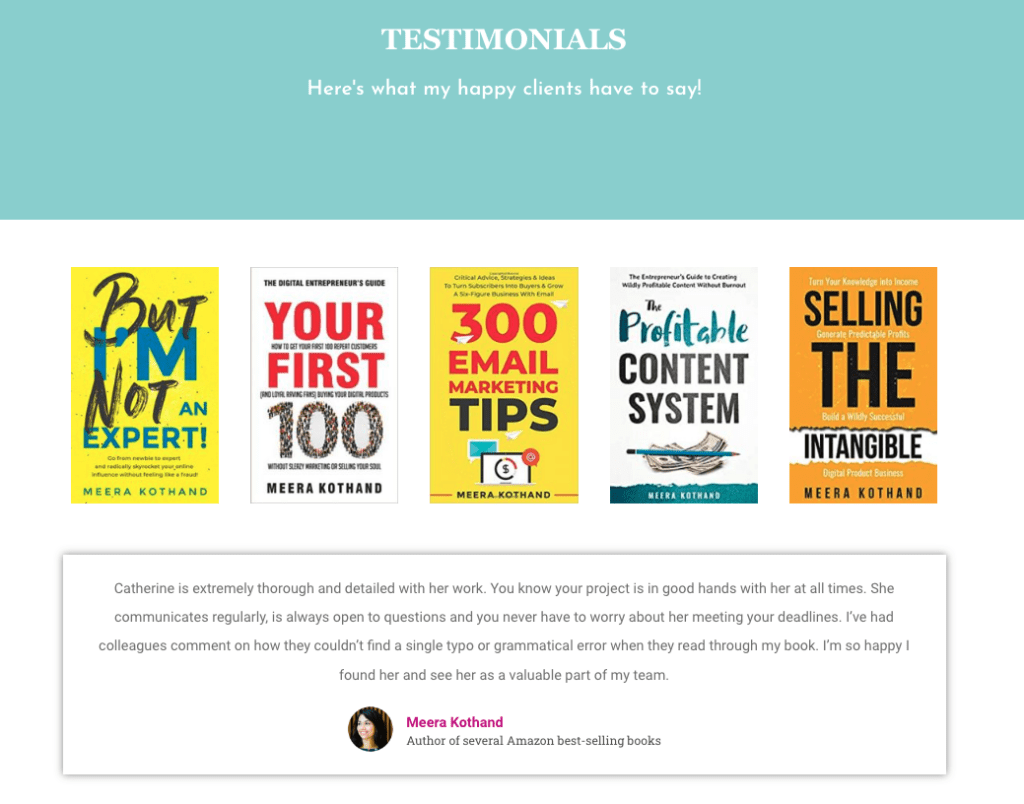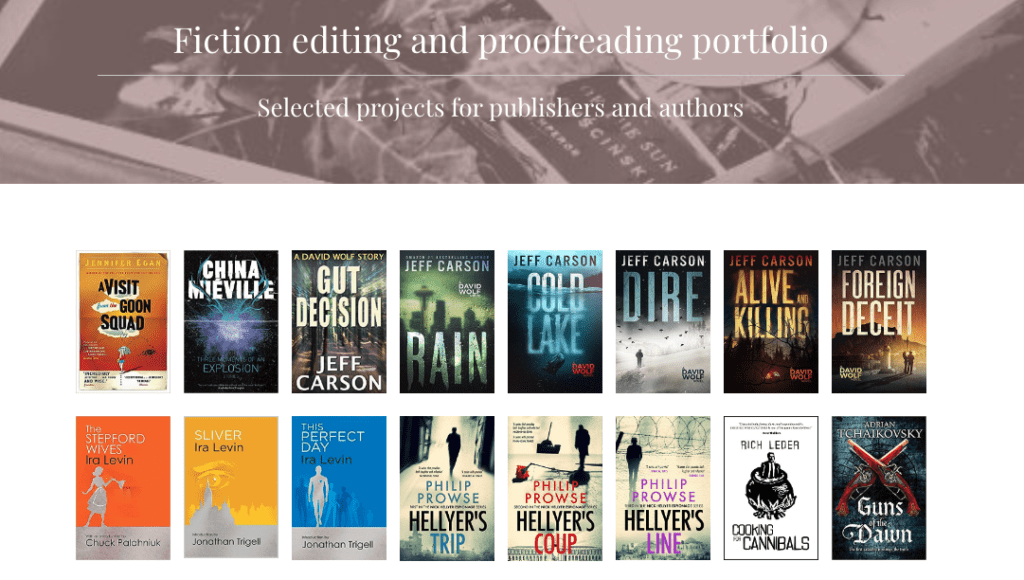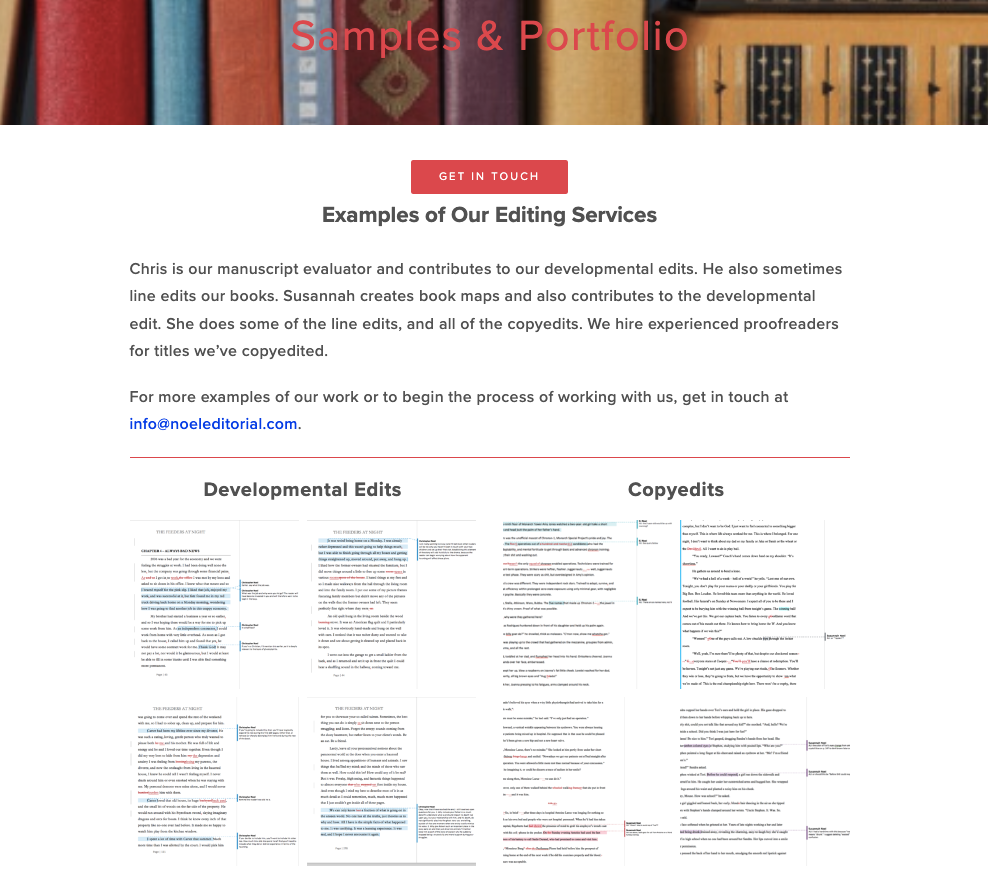
How to Create a Proofreading Portfolio for Your Website
If you’re a freelance proofreader, creating a strong portfolio is a great way to document your previous experience, thus showing potential clients that you know what you’re doing. A proofreading portfolio will consist of a selection, either comprehensive or selective, of works you have previously proofread. But how should you put one together? In this post, we take you through how to get samples for, and create, a proofreading portfolio for your website.
How to Build a Proofreading Portfolio
If you need to gather samples for your proofreading portfolio, your first port of call will be to ask previous clients for permission to use samples of their work on your website.
But if you’re just starting out as a proofreader, making a portfolio might feel like an uphill task. You may have worked on only a few small projects (or none at all). So how can you build up a strong base of projects to include?
The key, as with most freelance work, is to be proactive. If you wait for proofreading work to be listed on traditional job-listings pages, you could be waiting a long time. Instead:
- Identify potential clients and reach out to them (e.g., by cold email, through networking, or on social media). You can find clients that are representative of the kind of work you want to specialize in or contact a wide variety of people to build a portfolio that highlights your versatility.
- Find work on freelance marketplaces. This can be a financial hit, as many of the jobs on these are fairly low paid, but it can be a good way to quickly boost your portfolio. And the better your portfolio, the more likely you are to find better-paid jobs in the future.
- Ask friends and family if they need any help with proofreading and use any documents they give you as work samples.
If you’re desperate, you could even write your own samples with inserted errors. But this is unlikely to be as impressive as examples of real jobs.
However you find samples for your portfolio, make sure to ask the client’s permission to use their work. And if you’re struggling, you could offer a discounted or free service to potential clients in return for using their work in your portfolio.
Putting Together Your Proofreading Portfolio
Once you’ve got a decent number of projects under your belt, you need to think about putting together a compelling, coherent portfolio. There is no one perfect way of doing this. Some questions you’ll want to ask yourself include:
- Do you want to include all the projects you’ve worked on or just a curated selection?
- How do you want to present yourself? Will you specialize in a particular field (e.g., fiction, academic work, business documents) or will your selling point be your versatility?
- Which of your completed projects best represent the kind of work you want to do and the kind of proofreader you want to be?
- Do you want to include screenshots of document pages that show your editing and commenting style? Or just list the projects you’ve worked on? The former provides more concrete evidence of your achievements, but the latter may work if you’ve worked on anything well-known (e.g., a crime novel or documents for a large corporation) or if copyright issues prevent you from actually showing the work.
Both comprehensive and selective portfolios have pros and cons. A comprehensive portfolio emphasizes the extent and breadth of your experience. It’s also good for adding long-tail keywords to your content, which will help with website SEO. However, it may be dense and hard to navigate if you’ve got a lot of experience.
A selective portfolio is easier to navigate and can help to highlight your expertise in particular fields. It does run the risk, though, of looking like you have limited experience.
Presenting Your Portfolio
There are several things you can do to make your portfolio stand out and look professional. For instance:
- You could include a short bio at the top of your portfolio, highlighting your philosophy and areas of expertise.
- If your portfolio is extensive and potentially hard to navigate, separate it into categories. This way, prospective clients can see exactly how you could help them with their specific needs.
- If your portfolio is minimal because you’re at the start of your proofreading career, pad it out by writing more detailed case studies about successful past projects.
- You could include images: these will break up the text and make your portfolio more eye-catching.
Ultimately, your proofreading portfolio should communicate your experience and expertise in a way that potential clients will find appealing.
Proofreading Portfolio Examples
There are many different ways to showcase your work. Everybody has their own unique style and preferences, and their portfolios can be an expression of that.
Here are a few examples to inspire you.
Proofreader, copy editor, and writer Catherine Turner has useful links to her services, portfolio, contact information, etc., right below her name. Then, as you scroll down, you can read a long list of praise from various authors who have been happy with her services.

Louise Harnby is a fiction editor and proofreader. Her site includes all the important links at the top, and then there is a colorful selection of the books that she has worked on, which is followed by a more extensive text list.

Noel Editorial is an editing company run by a brother and sister team. They provide a few examples of work they have done in the past, but their strategy is to encourage their potential clients to contact them to get more information.

Becoming A Proofreader
If you’re looking to develop a career in proofreading, our Becoming A Proofreader course is the perfect way to learn the skills you need. Plus, if you achieve distinction scores in both our Becoming A Proofreader and Becoming An Editor courses, you can jump straight into guaranteed work with our partner company, Proofed! If you want to test a course out first, sign up for a free trial today to see what Knowadays could do for you.





Your email address will not be published.